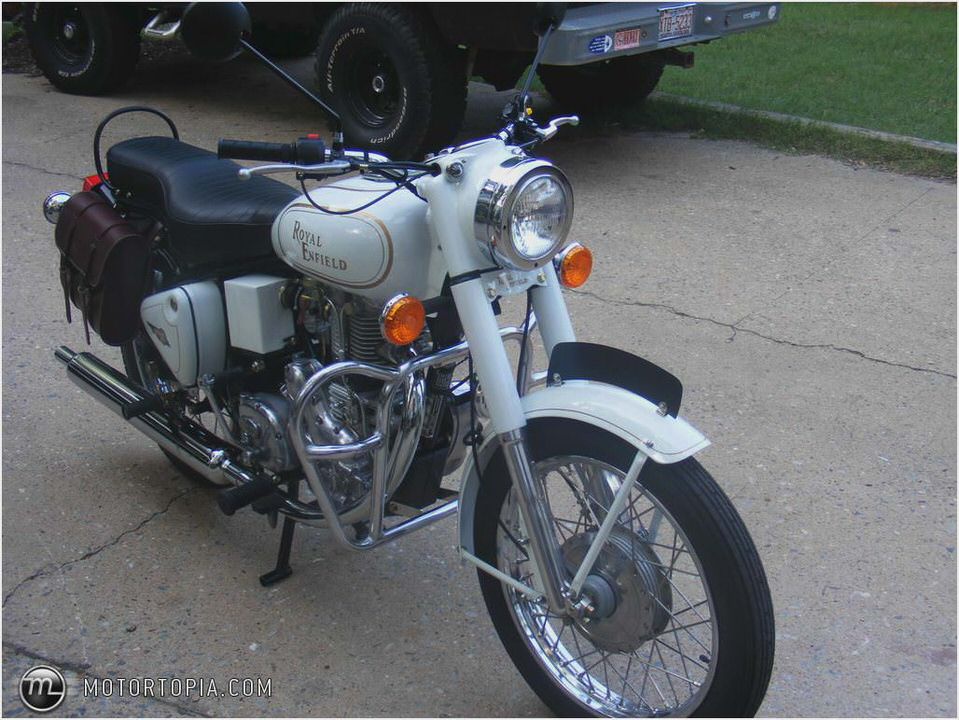
Royal Enfield Motorcycles Facing Financial Turmoil
lg+2006_Royal_Enfield_Thunderbird_500_right_rear.jpg
The last of the once-dominant British motorcycle brands to (sort of) survive the rise of the Japanese motorcycle industry may finally be succumbing. Royal Enfield’s parent Eicher Motors has announced that it plans to spin off the classic Brit bike brand, which actually produces bikes in India these days.
Although Eicher is putting a happy face in the situation, presenting it as an opportunity for the brand to get much-needed infusion of capital, observers see the move as Eicher abandoning its financial support for Royal Enfield, which makes less than 30,000 of its traditional – some would say obsolete – 250, 350 and 500cc singles each year. If the newly liberated company is unable to find the necessary cash, its prospects appear bleak.
Royal Enfield started building bicycles in 1898 and produced its first motorcycle in 1900. It began using its own engines in 1914, and the forefather of the current line of bikes, the first Bullet, was built in 1932. After World War II, Royal Enfield sometimes seemed to be one of the more innovative British makes and offered a line singles, V-twins, and the vertical twins it was best known for.
A 500cc vertical twin introduced in 1948 eventually grew to 736cc and became the Interceptor, the best-know model in the U.S. The Bullet was licensed for manufacture in India, where it was first produced over half a century ago and has been produced continuously since, with remarkably few changes.
Royal Enfield motorcycles made their first real foray into the U.S. market in the late 1950s, when 500 and 700cc vertical twins were sold with Indian badging as the troubled American brand tried to ward off the advances of other British marques in the new world. That arrangement ended in 1960. The early 1960s saw some U.S. racing successes for Enfields, probably most famously the amazing desert-racing performances of Eddie Mulder on an Interceptor tuned by the recently deceased Mel Dinesen.
But the company was beginning to flounder, and changed hands in 1962.
It was a time of diminishing fortunes for the British motorcycle market. The revered Vincent brand had ceased production in the mid 1950s. As motorcycling rolled into the 1960s and the Japanese companies revealed a brave new reality, AJS, Ariel, BSA, Greeves, Matchless, Norton, Triumph, Velocette and others had either gone under or were feeling the water rise.

They were simply unable to match the pace of technological innovation demonstrated by the Japanese at any price and certainly not at the prices Japanese bikes were selling for. By the mid 1960s, Royal Enfield was only making Interceptors, but its financial woes persisted. The British company eventually gave it up in 1970.
However, the Indian entity has soldiered on, making inexpensive, if unsophisticated, motorcycles mostly for its home market. In the U.S. they are valued primarily for their authentic nostalgia, but they suffer in any functional comparison to modern motorcycles. The Bullet is undoubtedly the longest-running motorcycle model in history.
Related Motorcycle Cruiser Article
Related News Articles
Related Sites
- Indian takeaway; HARRIET RIDLEY takes to the road on the Royal Enfield…
- Enfield buying/renting – Itinerary Suggestions for March-June 2014 – Page…
- 2006 Royal Enfield Bullet Electra X Motorcycle Trader New Zealand
- 2008 Enfield Bullet 500cc Classic Review Rider Magazine Reviews
- C5 Classic grin factor Review of Royal Enfield Bullet Classic C5 EFI by Paddy02
